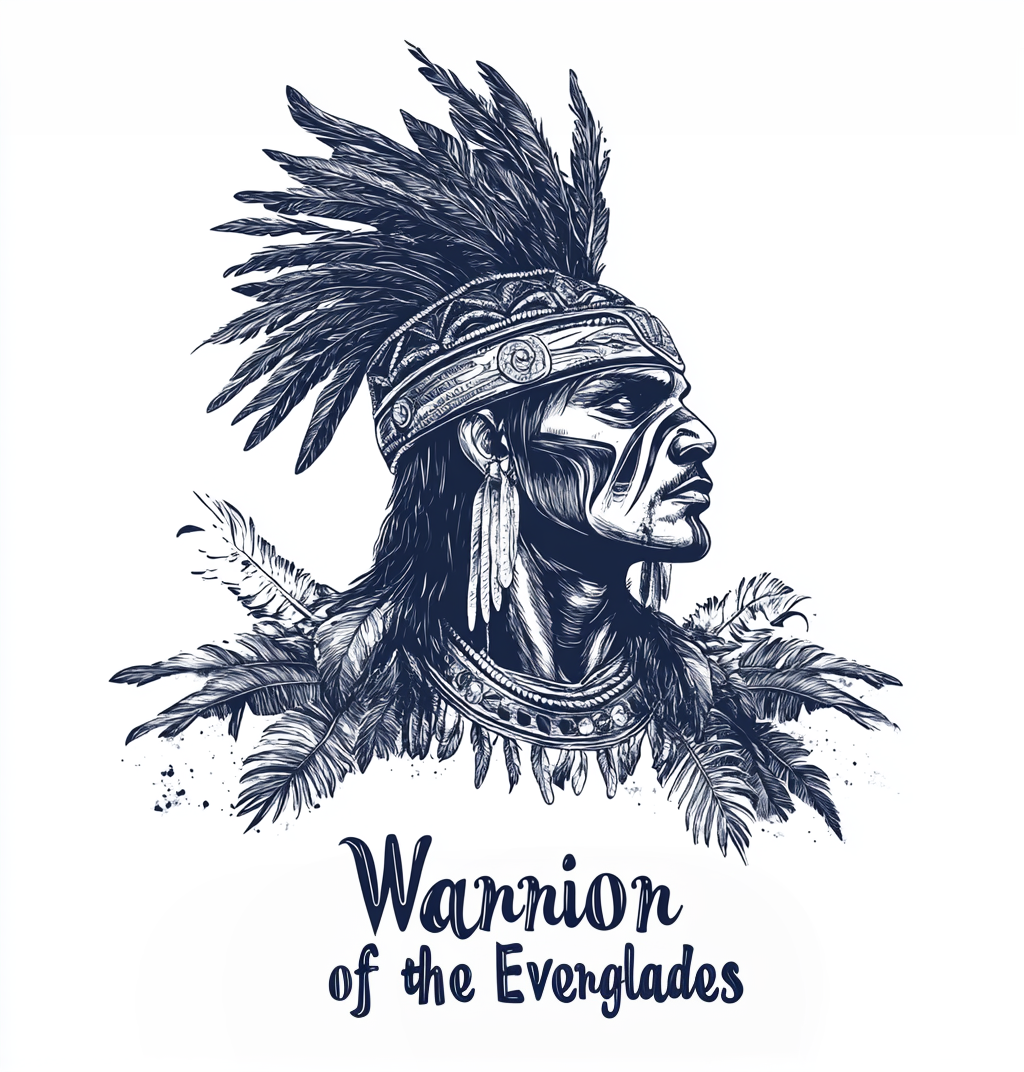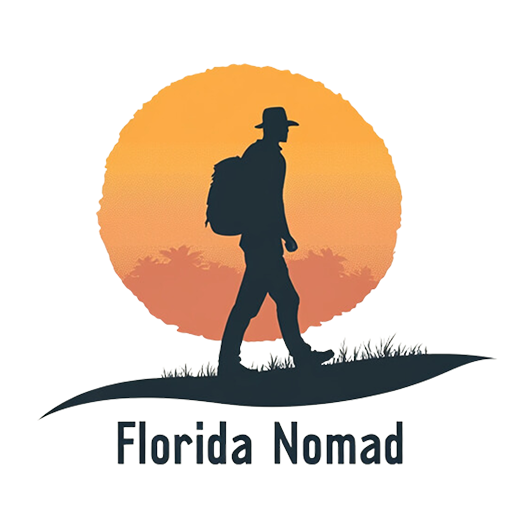
Florida Seminole Indian's Story of Survival and Cultural Resilience
Share
Florida’s wild landscapes have seen it all—from ever-changing swamps to bustling modern life—and one of the most awesome stories woven into its fabric is that of the Seminole Indians. Known as the “Unconquered People,” the Seminoles have an epic tale full of adventure, struggle, and triumph. In this piece, we take you on a laid-back journey through their history—from early days as Creek migrants blending with other groups to fierce battles in the Seminole Wars, and finally, to their modern-day hustle in keeping traditions alive while rocking new enterprises.
This article is packed with a fun narrative, complete with timeline tables and population graphs, all while naturally dropping SEO keywords like Seminole Tribe, Florida Native Americans, Seminole Wars, Chief Osceola, and more. So grab a drink, sit back, and enjoy this friendly deep dive into one of Florida’s most vibrant native histories.
The Early Days: How It All Began
The story kicks off in the early 1700s when groups of Creek Indians started moving into Florida. Over time, they mixed with African American runaways, other native folks, and a few locals, creating what we now know as the Seminole Tribe. The word “Seminole” might come from the Spanish term "cimarrón," which means wild or free—and that’s pretty spot on for these resilient people.
A New Home in a Wild Land
When these early settlers arrived, Florida was a whole different world—a land of swamps, Everglades, and thick forests. To make it work, the Seminoles had to learn a thing or two about survival:
- Food and Farming: They grew crops like maize and beans, hunted the local game, and even got into cattle ranching.
- Building the Right Way: With the heat and humidity, they built chickee houses—elevated structures with open sides that kept them cool and safe from the elements.
- Passing Down the Story: With no written language back then, every bit of history, tradition, and even fun stories about the Green Corn Dance was passed down by word of mouth.
Here’s a quick timeline of those early, game-changing moments:
| Year / Period | What Happened | Why It Matters |
|---|---|---|
| Early 1700s | Creek Indians started moving into Florida | Laid the foundation for a new, blended identity |
| Mid-1700s | Mixed with other native groups and runaway slaves | Created a unique culture that was all their own |
| Late 1700s | Settled in places like the Everglades | Learned to thrive in one of the toughest environments |
| Early 1800s | Communities started to form | Set the stage for their epic fight for survival and rights |
This table gives you a snapshot of how the Seminole people came together and started building their way of life.
A Quick Look at Population Trends
It’s cool to see how the Seminole population evolved over time. Check out this simple ASCII graph that shows rough population changes:
Population Trend (Estimated)
│
500│ ●
│ ●
400│ ● ●
│ ● ●
300│ ● ● ●
│ ● ● ●
200│ ● ● ● ● ●
│ ● ● ● ● ●
100│ ● ● ● ● ● ● ●
│ ● ● ● ● ● ● ●
└────────────────────────────────────────────────────
1700 1750 1800 1850 1900 1950 2000
This is a fun, simplified look at how the numbers went up and down as the Seminoles built their community.
Through the Storm: Wars and Cultural Resilience
No epic story is complete without some serious drama. For the Seminoles, that drama came in the form of the Seminole Wars. Stretching from the 1810s to the 1850s, these wars were about more than just battles—they were a fight for a way of life.
The Seminole Wars: Fighting for Freedom
Imagine a time when new settlers were pushing into Florida’s wild lands, forcing the Seminoles to defend their home. The wars that broke out weren’t just about territory—they were about keeping a unique culture alive. Here’s a quick look at the key phases:
- First Seminole War (1817–1818): This was the start of it all, sparked by border issues and the mix of runaway slaves. It was a rough start as U.S. troops began poking around Seminole territory.
- Second Seminole War (1835–1842): Now things got intense. With Chief Osceola emerging as a fearless leader, the Seminoles showed the world what they were made of. Their hit-and-run tactics and guerilla warfare made this war legendary.
- Third Seminole War (1855–1858): This was more of a series of skirmishes and smaller conflicts. Though less dramatic, it marked the gradual shift from open warfare to a focus on cultural survival.
To help keep things straight, here’s another timeline table that breaks down these conflicts:
| Year Range | What’s Happening | Key People & Events | How It Changed Things |
|---|---|---|---|
| 1817–1818 | First Seminole War | U.S. forces pushing into native lands | Set off tensions and opened the door for more |
| 1835–1842 | Second Seminole War | Chief Osceola leading the charge | Showed off the Seminoles’ unmatched spirit |
| 1855–1858 | Third Seminole War | Small battles, a shift in strategy | Moved from open fights to keeping traditions safe |
This table gives you a clearer picture of how the Seminole Wars unfolded and how each phase contributed to their resilience.
Holding It Together
Even in the middle of all this conflict, the Seminole people never lost sight of who they were. They kept their traditions alive—whether it was by celebrating the Green Corn Dance, keeping up their oral histories, or continuing to build those iconic chickee houses. These weren’t just rituals; they were lifelines to their past and a way to signal that, no matter what, their culture would not be wiped out.
The wars forced the Seminoles to adapt fast. They had to mix their clever survival skills with a deep-seated commitment to cultural traditions, a combination that made them incredibly tough. Even as they faced forced removals to places like Brighton, Hollywood, and Big Cypress reservations, the Seminole Tribe found ways to stick together and stay true to their roots.
Today’s Seminole: Blending Tradition with Modern Life
Fast forward to now, and the Seminole Tribe is as relevant and vibrant as ever. Modern Seminoles have taken the lessons from their long history and used them to build a strong, forward-thinking community that honors its past while embracing the future.
Keeping Traditions Alive in a Modern World
In recent years, there’s been a cool revival of Seminole traditions. You’ll see it in everything from patchwork clothing and traditional crafts to cultural events that celebrate native music, dance, and food. The tribe has even found clever ways to blend old and new:
- Education and Storytelling: Local schools and cultural centers are working hard to keep the Seminole language and stories alive. The same oral histories that once echoed around campfires are now part of formal lessons.
- Reviving Old Ceremonies: Rituals like the Green Corn Dance are making a comeback, offering a fresh way for young Seminoles to connect with their heritage.
- Economic Growth: By branching out into modern enterprises—think Seminole Gaming and even partnerships like Hard Rock International—the tribe has built a solid economic base that funds cultural projects and community programs.
Modern Population Trends: A Fresh Look
The Seminole community has been growing steadily, and it’s pretty inspiring to see. Here’s an updated, simple population graph to show the modern trend:
Modern Population Trend (Estimated)
│
1500│ ●●
│ ●●
1200│ ●● ●●
│ ●● ●●
900│ ●● ●● ●● ●●
│ ●● ●● ●● ●●
600│ ●● ●● ●● ●● ●● ●●
│ ●● ●● ●● ●● ●● ●●
300│ ●● ●● ●● ●● ●● ●●
└────────────────────────────────────────
1970 1980 1990 2000 2010 2020
This graph gives a laid-back look at how the Seminole community has steadily bounced back and grown over the years.
Embracing Political and Social Power
Beyond cultural revival, the Seminole Tribe is also a powerhouse in modern politics and business. Their tribal council and strong sense of governance have helped secure recognition for their rights and preserve their sovereignty. Today, the Seminoles are not just remembered for their past—they’re actively shaping their future by engaging in conversations about indigenous rights, cultural preservation, and economic development.
Their ability to blend traditional practices with modern business models (like those in gaming and tourism) is a great example of how a community can honor its roots while moving forward. This balance of old and new has made the Seminole Tribe a respected leader in discussions about Native American traditions and tribal governance.
A Personal Take on Seminole Resilience
Looking back, the Seminole story is more than just dates and battles—it’s about a people who’ve always found a way to keep their spirit alive. Whether it’s through a lively celebration of traditional music or innovative community projects that honor their ancestors, the Seminoles continue to remind us that resilience isn’t just a word; it’s a way of life.
Their journey—from humble beginnings in the wilds of early Florida to becoming a modern, economically vibrant community—shows that even in the face of enormous challenges, the human spirit can find creative ways to adapt and flourish. And that’s something we can all appreciate.
Wrapping It Up
The history of the Seminole Indians in Florida is one wild, inspiring ride. It’s the story of Creek migrants who found a new home in a tough environment, of brave fighters like Chief Osceola who stood up in the face of overwhelming odds, and of a community that has managed to keep its traditions alive while carving out a bright future.
From early settlement and blending of cultures to epic battles in the Seminole Wars and finally to modern-day successes in preserving their heritage and achieving economic strength, the Seminole Tribe’s journey is nothing short of legendary. Their story is a living reminder that the spirit of a people can endure even the toughest challenges—making the Seminoles not just a part of Florida history, but an ongoing symbol of resilience, creativity, and cultural pride.
For anyone curious about Florida’s past, the Seminole story is a must-read. It’s a tale that’s both educational and downright inspiring, offering lessons on the importance of staying true to who you are, no matter what life throws at you. So here’s to the Seminoles—a community that’s shown time and again that being unconquered isn’t just a title, it’s a way of life.
